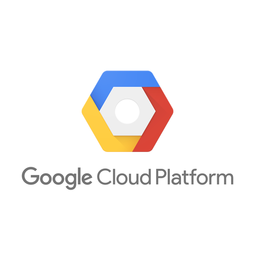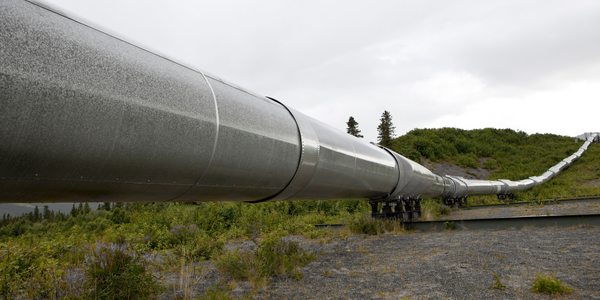The Golden State Warriors’ alley-oop: Using today’s data for the Bay Area fan experience of tomorrow

Customer Company Size
Large Corporate
Region
- America
Country
- United States
Product
- BigQuery
- App Engine
- Firebase
- Gemini for Google Workspace
- Vertex AI
Tech Stack
- Google Cloud
- Google Workspace
- BigQuery
- Firebase
- App Engine
Implementation Scale
- Enterprise-wide Deployment
Impact Metrics
- Customer Satisfaction
- Digital Expertise
- Productivity Improvements
Technology Category
- Analytics & Modeling - Machine Learning
- Analytics & Modeling - Predictive Analytics
- Platform as a Service (PaaS) - Application Development Platforms
Applicable Functions
- Business Operation
- Sales & Marketing
Use Cases
- Digital Twin
- Remote Asset Management
Services
- Cloud Planning, Design & Implementation Services
- Software Design & Engineering Services
- System Integration
About The Customer
The Golden State Warriors are a professional basketball team based in San Francisco, competing in the NBA as part of the Pacific Division of the Western Conference. With a rich history that includes seven NBA Championships and numerous accolades, the Warriors have evolved into more than just a basketball team. Under the ownership of Joe Lacob and Peter Guber since 2010, the team has embarked on a journey to transform into a sports and entertainment company. This transformation has involved significant investments in technology infrastructure, arena ownership, and personalized fan experiences. The Warriors are committed to leveraging technology to enhance their business operations and deliver exceptional experiences to their fans.
The Challenge
The Golden State Warriors faced the challenge of transforming from a traditional basketball team into a modern sports and entertainment company. This required a significant overhaul of their technology infrastructure to meet the expectations of fans, partners, and ownership. The team needed to design a cloud infrastructure that could scale with their needs and redefine how they deliver digital experiences to fans. Additionally, they aimed to improve team performance and player management strategies by leveraging data analytics. The organization also sought to enhance the fan experience at Chase Center by providing a seamless live experience and personalized digital interactions through a custom-built mobile app.
The Solution
The Warriors partnered with Google Cloud to implement a cloud-based data and IT infrastructure tailored to their specific needs. This included the use of Google Cloud products such as BigQuery, App Engine, Firebase, and Google Workspace to support their digital transformation. The team developed a custom mobile app using App Engine and Firebase, allowing fans to manage game tickets, order food, and access real-time information about Chase Center. The app also consolidates over 30 sources of customer data and 100 million data points to personalize the fan experience. Additionally, the Warriors adopted BigQuery to analyze business and basketball data, enabling data-driven decision-making for both business operations and team performance. The organization also implemented Google Workspace and Gemini for Google Workspace to automate repetitive tasks and improve productivity.
Operational Impact
Quantitative Benefit

Case Study missing?
Start adding your own!
Register with your work email and create a new case study profile for your business.
Related Case Studies.
.png)
Case Study
Improving Vending Machine Profitability with the Internet of Things (IoT)
The vending industry is undergoing a sea change, taking advantage of new technologies to go beyond just delivering snacks to creating a new retail location. Intelligent vending machines can be found in many public locations as well as company facilities, selling different types of goods and services, including even computer accessories, gold bars, tickets, and office supplies. With increasing sophistication, they may also provide time- and location-based data pertaining to sales, inventory, and customer preferences. But at the end of the day, vending machine operators know greater profitability is driven by higher sales and lower operating costs.

Case Study
Remote Wellhead Monitoring
Each wellhead was equipped with various sensors and meters that needed to be monitored and controlled from a central HMI, often miles away from the assets in the field. Redundant solar and wind generators were installed at each wellhead to support the electrical needs of the pumpstations, temperature meters, cameras, and cellular modules. In addition to asset management and remote control capabilities, data logging for remote surveillance and alarm notifications was a key demand from the customer. Terra Ferma’s solution needed to be power efficient, reliable, and capable of supporting high-bandwidth data-feeds. They needed a multi-link cellular connection to a central server that sustained reliable and redundant monitoring and control of flow meters, temperature sensors, power supply, and event-logging; including video and image files. This open-standard network needed to interface with the existing SCADA and proprietary network management software.

Case Study
RobotStudio Case Study: Benteler Automobiltechnik
Benteler has a small pipe business area for which they produce fuel lines and coolant lines made of aluminum for Porsche and other car manufacturers. One of the problems in production was that when Benteler added new products, production had too much downtime.

Case Study
Driving Digital Transformations for Vitro Diagnostic Medical Devices
Diagnostic devices play a vital role in helping to improve healthcare delivery. In fact, an estimated 60 percent of the world’s medical decisions are made with support from in vitrodiagnostics (IVD) solutions, such as those provided by Roche Diagnostics, an industry leader. As the demand for medical diagnostic services grows rapidly in hospitals and clinics across China, so does the market for IVD solutions. In addition, the typically high cost of these diagnostic devices means that comprehensive post-sales services are needed. Wanteed to improve three portions of thr IVD:1. Remotely monitor and manage IVD devices as fixed assets.2. Optimizing device availability with predictive maintenance.3. Recommending the best IVD solution for a customer’s needs.








